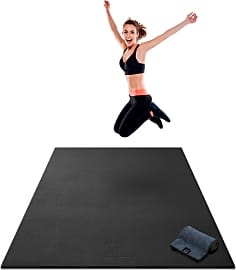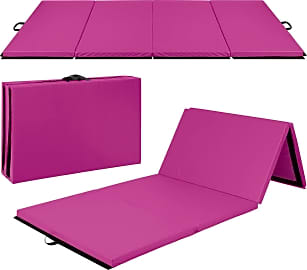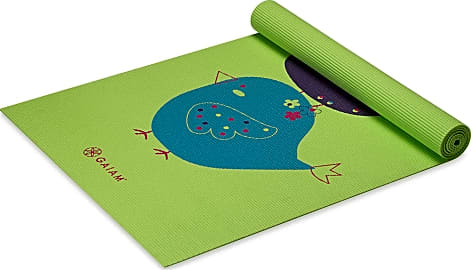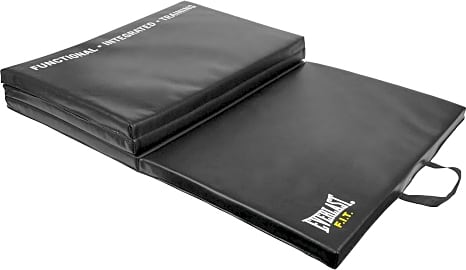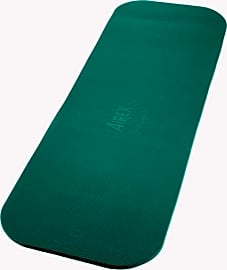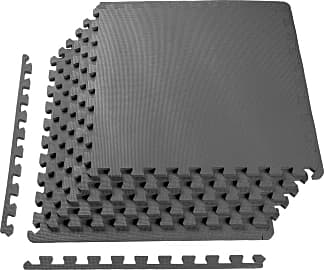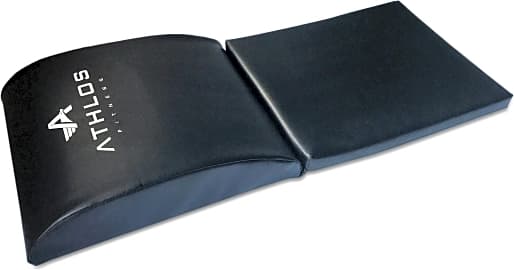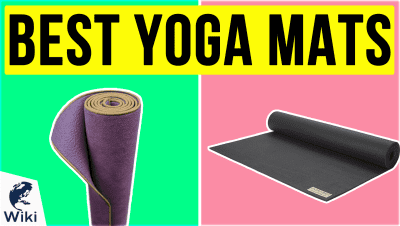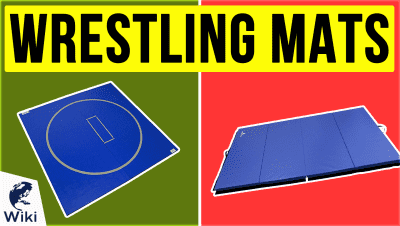The 10 Best Exercise Mats

This wiki has been updated 41 times since it was first published in March of 2015. Whether you prefer to work up a sweat at home, at the gym, or in the park, you'll find a comfortable landing spot on one of the exercise mats featured here. We've included models ideal for gymnasts, yoga practitioners, and Pilates enthusiasts, as well as tougher models appropriate for more vigorous workouts, such as martial arts training. There are plenty of colors and sizes to select from, too. When users buy our independently chosen editorial selections, we may earn commissions to help fund the Wiki.
Editor's Notes
April 21, 2021:
We saw no need to make any major changes to this list, and so it was a pretty forgiving round of updates. While this category is a broad one, we felt that the last editor for this list did a good job of putting together a nice mix of options that many will find helpful. However, if you’ve already got a decent idea of what your intentions are for this purchase, then you might find that you’ll do better with one of our specialized sets of rankings.
For portable options that can be rolled up and hauled to your studio of choice, give some thought to checking out our list of yoga mats. If you’re looking for a permanent solution to furnish a larger area, look to our lists gym flooring, or even garage mats. Jiu Jitsu enthusiasts looking to elevate their ground-and-pound game might be interested in our rankings for wrestling mats.
March 21, 2020:
Because we know that "exercise" can mean a lot of things to different people, we've kept a wide variety of general-purpose mats at this time. For most, the cushioning and size of the ProsourceFit Tri-Fold or the Gorilla Mats Premium are tough to beat. These are not thin, meager pieces of vinyl or plastic; they're made from heavy-duty materials to handle high-intensity training. We've removed the Reehut Extra Thick, though, since the claims about its thickness may be exaggerated. But we still like the Everlast Folding, even though it comes in a more limited range of colors than similar models.
For something slightly more portable than the aforementioned, you might consider the Airex Coronella, which weighs a modest five pounds and comes in three colors. Or, if you're into casual yoga or light floor exercises, the Spri Pro or Gaiam Playtime (which is for children) remain good choices, although serious yogis may prefer a specific-purpose yoga mat.
Finally, we opted to remove the ProSource Puzzle, because there are occasional issues with the fit of the pieces. Those who want an interlocking mat might consider the BalanceFrom Puzzle, instead. Note that this type of interlocking mat isn't necessarily the best option for high-intensity interval training, because the force of the exercises can cause the squares to come apart. If, however, you need somewhere to stand while you lift weights, a place for doing pushups or sit-ups, or something to function as a treadmill mat, this type of model should be fine.
Special Honors
Rubber Flooring Inc. 3/8-Inch Rolls Commercial gyms have heavy-duty needs, and the Rubber Flooring Inc. 3/8-Inch Rolls are a great, high-quality solution. There are plenty of subdued color options to choose from, and rolls can be cut to custom lengths, which should make installation easy no matter the room's size. rubberflooringinc.com
Personalization Mall Yoga Mats If you really want to stand out at the gym, you might just need one of these Personalization Mall Yoga Mats. You can add text, colors, and photos to create a piece that showcases your individuality, whether that's funky chic or reserved yet stylish. personalizationmall.com
The Reversible Mat 5mm by Lululemon The Reversible Mat 5mm by Lululemon has a top surface that doesn't become slippery too easily, and it offers plenty of cushioning, just like many other choices. It also, however, has an antimicrobial additive that keeps mold and mildew at bay, so you don't have to worry about unpleasant odors ruining your flow. lululemon.com
What Separates a Good Exercise Mat From a Great One?
You may want to consider whether you need an exercise mat for indoor or outdoor use.
The most important feature of any exercise mat is its cushion. Most top-of-the-line mats provide at least 2 to 3 layers of foam. While thickness is largely a matter of how compact a mat's cushion is, you probably want a mat to sit at least a couple of inches off the floor. This way there's no risk of knees or elbows sinking in.
Any worthwhile mat should be at least 4 feet long, and it should fold down for easy storage. Generally speaking, any one-person mat should weigh at least a few pounds (otherwise there may not be sufficient cushion), and it should come with a handle for easy transport.
You may want to consider whether you need an exercise mat for indoor or outdoor use. In addition, you'll want to confirm that any mat is waterproof and frequency-sealed. Check to see what type of material the mat's outer-lining is made of (vinyl and polyurethane are the most common). Is that material easy to clean? Is it resistant to germs and bacteria? In the event that the cushion or the liner begin to wear, can either of them be replaced?
Once you've found an exercise mat that meets your needs, it pays to read a few of that model's online customer reviews. What you're looking for is a general consensus. The value of reviews is that each customer has had some time to live with an exercise mat. As such, these reviews represent the most honest and reliable gauge of determining whether a mat might hold up, or whether it's highly prone to wear and tear.
Several Little-Known Uses For an Exercise Mat
At its best, any exercise mat that's purchased for personal fitness will get used for two hours a day. During off-months, that mat may not get used at all. So how do you get more value out of an exercise mat? The first step is to be creative. Try and think of that mat as a lightweight, cushioned surface that can be used for any variety of purposes, both indoor and out.
If you attend outdoor concerts or tailgate parties, for example, you can lay that mat down to create a comfortable seat.
If you attend outdoor concerts or tailgate parties, for example, you can lay that mat down to create a comfortable seat. If you own an SUV or a family-sized truck, you can lay that mat down across the rear bed, thereby allowing the kids - or even the pet - to sit comfortably across the back.
Kids can sit on an exercise mat while they're playing video games. Toddlers can sit on an exercise mat to avoid spilling drinks on the floor. Family members can recline on an exercise mat whenever they're watching TV. During the warm-weather months you can use the mat as a porch cushion outdoors.
If you're an artist, an exercise mat is perfect for doing work while kneeling in front of a flat canvas. If you're a gardener an exercise mat is perfect for easing the burden on your knees. If you're a mechanic, an exercise mat is perfect for doing any type of engine work that requires you to lie on your back. If you live at the shore, an exercise mat's windproof weight might make it ideal for the beach.
How Better Materials Made For a More Durable Exercise Mat
Up until the 20th century, personal exercise mats were little more than a flat pad that could be rolled up and tied together for storage. There were several issues with these early foam mats, not the least of which was that the foam absorbed sweat, which led to bacteria and odors. In addition, the early style of foam wasn't very resistant, which led to peeling and abrasive surfaces.
Up until the 20th century, personal exercise mats were little more than a flat pad that could be rolled up and tied together for storage.
Flat mats became more resilient thanks to the introduction of polyurethane foam during the 1950s. In addition to a stronger cushion, post-World-War-II exercise mats were built with a polyvinyl liner, which protected the inner-cushion from perspiration and wear. Polyvinyl could be wiped down or scrubbed, which meant an average mat could go from lasting several months to lasting several years. Certain exercise-mat liners were designed with zippers, which meant that the liner could be removed, as well.
The incorporation of a liner meant that most mats needed to folded down as opposed to being rolled up. Folding mats came with nylon handles for ease of transport, and - as of the 1960s - a lot of folding mats were also being designed with Velcro fasteners. These fasteners allowed for connecting several mats along a hardwood floor.
Today, a number of high-quality exercise mats are being manufactured with memory foam and a bacteria-resistant liner. Certain mats are even eco-friendly and biodegradable. Almost all of today's exercise mats are designed to be more durable. That durability is the result of using stronger materials, combined with better science.


